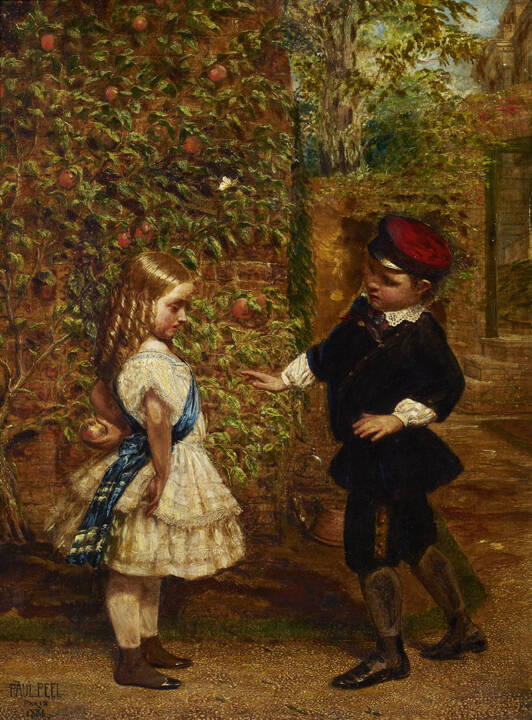Childhood is a universal human experience, but it isn’t experienced in a universal way. Ideas about what childhood is or what it should be are shaped by our culture, specific to a time and place. So how can childhood be defined?
UNESCO defines early childhood as: “[a] time of remarkable brain growth, these years lay the foundation for subsequent learning and development.” So while this is experienced by all, discussions regarding more complex aspects of childhood, from school curriculum, to the impact of social media, are just a few topics that have recently emerged into public debate. It is not surprising then that the subject of childhood is a relevant one in many fields, including the visual arts.
Artists have long depicted children and childhood using different conventions. In ancient Egypt, for example, children were depicted very small—often up to the adult’s knee, naked, and with a side hair lock of youth. During the Victorian era, in both England and Canada, middle class children were portrayed as happy and innocent, often dressed in oversized or old-fashioned clothing—to emphasize their physical smallness and the adults’ nostalgia for a lost childhood. This exhibition traces a historical progression of ideas about childhood in Western thought and their representation. Spanning over 100 years (1886-1991), the exhibition is a survey of paintings, drawings, prints, and photographs from The Robert McLaughlin Gallery’s permanent collection of over 4,500 works.
The works reference religious themes, family dynamics, traditions of schooling and discipline, and the shifting cultural ideals around children’s physical, social, and emotional development across both time and socio-geographic lines. Some works depict play and leisure, while others present sketches of a working class childhood.
As the title suggests, adults are encouraged to “ask children” what they think about these artworks. Do the depictions of children remind them of their own experiences? How do they differ? The activities that accompany the exhibition give young visitors an opportunity to interact with the work and introduce their own experiences and views into a gallery setting.
